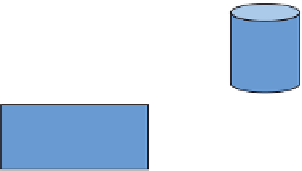Java Reference
In-Depth Information
space, but also increases the risk of inconsistent data manipulation, in case the data is updated in
one file but not in other files. Finally, from an application integration perspective, the file-based
approach to data management comes with high difficulty and thus substantial cost.
To store and manage data in a more structured way, databases have been introduced. A database
represents a subset of a particular real-world problem and has an intrinsic meaning to a specific
group of users. It is being managed by a database management system (DBMS). This is a collection
of programs that facilitates the process of defining, constructing, and manipulating databases for
various applications. Throughout the past decades, many different types of DBMSs have been intro-
duced in the industry: hierarchical DBMSs, Codasyl DBMSs, relational DBMSs, object-oriented
DBMSs, object relational DBMSs, and so on. Undoubtedly, the most popular DBMS technology in
use nowadays is the relational DBMS (RDBMS). Various software implementations of RDBMSs
have been provided by leading firms such as Microsoft, Oracle, and IBM. A key characteristic of
an RDBMS is that it stores both data and data definitions in a comprehensive and transparent way.
This is illustrated in Figure 9-1.
Data Catalog
DBMS
Java Program
Database
figure 9-1
In this chapter, you learn how to access RDBMSs from within Java. First, there is an introduction
or refresher covering the basic concepts of relational database technology. Next, Java Database
Connectivity (JDBC) as a popular application programming interface (API) for accessing tabu-
lar data is discussed. Following that, SQLJ, structured query language combined with Java, and
Hibernate, a popular object relational mapping framework capable of mapping Java objects to rela-
tional databases in a transparent way, are both introduced. Java-friendly object-oriented database
management systems (OODBMS) are presented as an alternative to relational databases. Then you
will find a brief comparison of these technologies and their place in the business world.
covering the Basics of relational dataBases
A fundamental building block of a relational database is a relational scheme that's a gathering of
various database tables and related constructs (queries, views, and indexes) describing real-life con-
cepts. It is typically developed during database design and is not expected to change too frequently.
Every relational scheme has one or more relational tables that store information about a particular













Search WWH ::

Custom Search